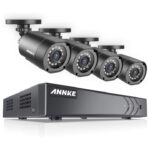Smart home devices are what we use for home automation which is exactly what it sounds like, the ability to control items around the house automatically either through voice commands or control using remotes interfaces and mobile apps.
Internet of Things has provided us an opportunity to be more efficient in how we do things, whilst saving us time, money and often emissions in the process. This comes on the back of the world being environmentally conscious and seeing rapid weather climate change caused by all our human activities.
Having said that, smart home devices have brought lifestyle changes and general in the home setup these smart devices allow our home’s appliances and interior devices to connect to the internet and allow us to run them remotely if need be. Internet of things has therefore, enabled homeowners the ability to adjust the parameters of systems like thermostats to control temperature and climate conditions, lighting, and cctv & security sensors remotely through apps on their smartphones or tablets.
Application example.
Smart home devices have improved the lives of many households across the world. To ensure smart home devices are a source of joy and mor so comfort in your life, it’s important to invest in high quality products manufactured with reliable electronic components. However, thanks to access to internet more specifically Youtube, we have seen some great DIY examples that require little investment and deliver the same result if not better since its customised.
One way to build a smart building is to buy lots of electronic components online. Unfortunately, this can involve spending a lot of resources including your money and time. For some people, this is just an overkill. If your needs are simpler, a few inexpensive products will do the same job and deliver the conveniences a high-end smart home can deliver at a budget.
The Raspberry Pi is an ultra-popular single-board computer and you can add Raspberry Pi Display to make it complete. Being a single board, it is tiny and therefore uses very little electricity. It now being used by hobbyist and professionals alike to create DIY smart home hubs as they work wonderfully and can connect with addon like Alexa, Google Assistant and Let’s encrypt integration.
Features of Smart Electronic Components Devices
Alexa, Google Assistant, SmartThings, and Apple HomeKit are four of the most popular leading ecosystems for smart home devices. You would expect these manufacturers to work towards a common goal of allowing their product to be used together in same ecosystem, but their biggest problem is that they are not inter-compatible.
Irrespective of that we will highlight some of the features of a good smart electronic device for your DIY home automation project.
- Connectivity
Smart home devices are normally accessed and controlled through phone apps and actions are input to deliver a particular result. Therefore, its is crucial for any IoT device in your smart building to be operated remotely and as such connectivity to the internet is key for it to be deemed smart.
For example, if I am signed up on an electric tariff that is cheaper at certain times of day and need to set my equipment on at those time which might coincide with me being at work. Then I can put the washing machine on whilst am in the office like a boss.
- Sensing technology
Sensors play a crucial role in smart devices. We have seen manufacturers pushing to develop these miniature devices for less than a dollar. This has helped steer the industry to greater heights and made all sort of things possible. This has been applied well by virtual sensing apps on pet tracking products which are collated by gps satellites and gyro sensors. Sensors have become so small to put it into context, you will need 50 sensors to fit on your thumb nail and yet as tiny as they are, they still have enormous capabilities with positive around energy saving as they consume less electricity and waste less energy in the whole.
- Touch Screens
Our phones and tablets act as good standard interface design for touch. Since most of us have become used to touch screens, it has become paramount that controls need to be digitally controlled through touch screen interfaces.
- Voice recognition
“Alexa, play me some music” … “Alexa switch on the light” This is voice recognition at its best. You can even do shopping on Amazon by voice. Facial recognition goes hand in hand with voice as another important feature in the hands-free technology category from signing in to our mobile with face recognition technology, access our office and homes hands free. Some cars do not really need a key and can be opened and locked, switched on via your mobile phone. As technology continues to advance, we are seeing less physical touch required to access and operate things and makes us feel like Jedi masters to some level.
- Antennas & WiMax
Although our mobile phones seem like they do not have antennas, they do have them but not visible as such. For wireless devices to communicate they need antennas, and these allows them to communicate by sending and receiving signals. How do they do this? Through antennas which facilitate the communication between the devices and with the controller which could be your mobile phone. Therefore,antennas are a crucial feature in IoT to allow for electromagnetic signals to be sent and received amongst the devices.
Conclusion
IoT has offered us opportunities to be more efficient in how we do things around our homes and work environment. We need to embrace it totally.
Article researched & written by Electronic Tech writer Jamin Kari.








